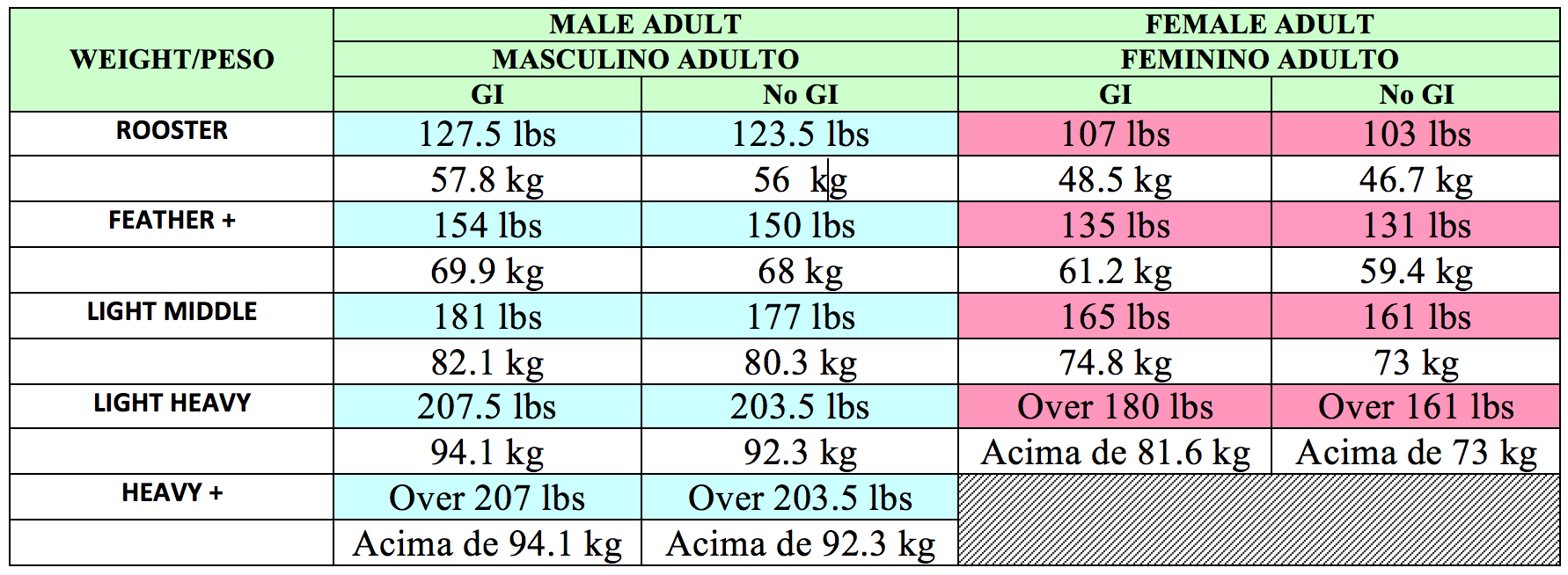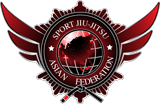- Home
- ASJJF
- Events
- ART
- Results
-
Athletes Rank
- 2025 ASJJF
- Asia Jiu Jitsu Ranking 2025
- Japan Jiu Jitsu Ranking 2025
- Phillipines Jiu Jitsu Ranking 2025
- China Jiu Jitsu Ranking 2025
- Marianas Pro Ranking 2025
- Malaysia Jiu Jitsu Ranking 2025
- Taiwan Jiu Jitsu Ranking 2025
- India Jiu Jitsu Ranking 2025
- Asia No-gi Ranking 2025
- Japan No-gi Ranking 2025
- Phillipines No-gi Ranking 2025
- China No-gi Ranking 2025
- Marianas Pro No-gi Ranking 2025
- Malaysia No-gi Ranking 2025
- Taiwan No-gi Ranking 2025
- India No-gi Ranking 2025
- Korean Jiu Jitsu Ranking 2025
- Little Samurai Kids 2025
- Korean No-gi Ranking 2025
- 2024 ASJJF
- Asia Jiu Jitsu Ranking 2024
- Japan Jiu Jitsu Ranking 2024
- Phillipines Jiu Jitsu Ranking 2024
- China Jiu Jitsu Ranking 2024
- Marianas Pro Ranking 2024
- Malaysia Jiu Jitsu Ranking 2024
- Taiwan Jiu Jitsu Ranking 2024
- India Jiu Jitsu Ranking 2024
- Asia No-gi Ranking 2024
- Japan No-gi Ranking 2024
- Phillipines No-gi Ranking 2024
- China No-gi Ranking 2024
- Marianas Pro No-gi Ranking 2024
- Malaysia No-gi Ranking 2024
- Taiwan No-gi Ranking 2024
- India No-gi Ranking 2024
- Korean Jiu Jitsu Ranking 2024
- Little Samurai Kids 2024
- Korean No-gi Ranking 2024
- 2023 ASJJF
- 2022 ASJJF
- 2021 ASJJF
- Asjjf Asian Jiu Jitsu Ranking 2020 ~ 2021
- Asjjf Asian No-gi Ranking 2020 ~ 2021
- Asjjf Japan Jiu Jitsu Ranking 2020 ~ 2021
- Asjjf Japan No-gi Ranking 2020 ~ 2021
- Asjjf Jiu Jitsu China Ranking 2020 ~ 2021
- Asjjf No-gi China Ranking 2020 ~ 2021
- Asjjf Jiu Jitsu Philippines Ranking 2020 ~ 2021
- Asjjf No-gi Philippines Ranking 2020 ~ 2021
- Asjjf Jiu Jitsu Korea Ranking 2020 ~ 2021
- Asjjf No-gi Korea Ranking 2020 ~ 2021
- Asjjf India Jiu Jitsu Ranking 2020 ~ 2021
- Asjjf India No-gi Ranking 2020 ~ 2021
- Sjjif Jiu Jitsu Asian Ranking 2019 ~ 2020
- Sjjif No-gi Asia Ranking 2019 ~ 2020
- 2019 ASJJF
- Asjjf Asian Jiu Jitsu Ranking 2019
- Asjjf Japan Jiu Jitsu Ranking 2019
- Asjjf Philippines Jiu Jitsu Ranking 2019
- Asjjf Korea Jiu Jitsu Ranking 2019
- Asjjf China Jiu Jitsu Ranking 2019
- Asjjf India Jiu Jitsu Ranking 2019
- Asjjf East Japan Jiu Jitsu Ranking 2019
- Asjjf West Japan Jiu Jitsu Ranking 2019
- Asjjf South Japan Jiu Jitsu Ranking 2019
- Las Conchas Jiu Jitsu Ranking 2019
- Adi Sports Jiu Jitsu Ranking 2019
- Asjjf Asian No-gi Ranking 2019
- Asjjf Japan No-gi Ranking 2019
- 2018 ASJJF
- *****asjjf/sjjif Jiu Jitsu Asia Ranking 2018
- *****asjjf/sjjif No-gi Asia Ranking 2018
- ***asjjf Jiu Jitsu Japan Ranking 2018
- ***asjjf No-gi Japan Ranking 2018
- ***asjjf Jiu Jitsu Korea Ranking 2018
- ***asjjf Jiu Jitsu Philippines Ranking 2018
- ***asjjf Jiu Jitsu China Ranking 2018
- ***asjjf Jiu Jitsu Taiwan Ranking 2018
- *asjjf East Japan Ranking 2018
- *asjjf West Japan Ranking 2018
- *asjjf South Japan Ranking 2018
- *adi Sports Ranking 2018
- *las Conchas Ranking 2018
- 2017 ASJJF
- 1- Asjjf - Dumau Asia Ranking 2017
- 2- Asjjf - Dumau Japan Ranking 2017
- 3- Asjjf - Dumau Korea Ranking 2017
- 4- Asjjf Philippines Ranking 2017
- 5- Asjjf West Japan Ranking 2017
- 6- Asjjf East Japan Ranking 2017
- 7- Asjjf South Japan Ranking 2017
- 8- Adi Sports Ranking 2017
- 9- Asjjf - Dumau No-gi Asia Ranking 2017
- 2016 ASJJF
- Rank 2015
- Rank 2014
- Rank Dumau 2013
- 2025 ASJJF
-
Academy Rank
- 2025 ASJJF
- Asia Jiu Jitsu Ranking 2025
- Japan Jiu Jitsu Ranking 2025
- Phillipines Jiu Jitsu Ranking 2025
- China Jiu Jitsu Ranking 2025
- Marianas Pro Ranking 2025
- Malaysia Jiu Jitsu Ranking 2025
- Taiwan Jiu Jitsu Ranking 2025
- India Jiu Jitsu Ranking 2025
- Asia No-gi Ranking 2025
- Japan No-gi Ranking 2025
- Phillipines No-gi Ranking 2025
- China No-gi Ranking 2025
- Marianas Pro No-gi Ranking 2025
- Malaysia No-gi Ranking 2025
- Taiwan No-gi Ranking 2025
- India No-gi Ranking 2025
- Korean Jiu Jitsu Ranking 2025
- Little Samurai Kids 2025
- Korean No-gi Ranking 2025
- 2024 ASJJF
- Asia Jiu Jitsu Ranking 2024
- Japan Jiu Jitsu Ranking 2024
- Phillipines Jiu Jitsu Ranking 2024
- China Jiu Jitsu Ranking 2024
- Marianas Pro Ranking 2024
- Malaysia Jiu Jitsu Ranking 2024
- Taiwan Jiu Jitsu Ranking 2024
- India Jiu Jitsu Ranking 2024
- Asia No-gi Ranking 2024
- Japan No-gi Ranking 2024
- Phillipines No-gi Ranking 2024
- China No-gi Ranking 2024
- Marianas Pro No-gi Ranking 2024
- Malaysia No-gi Ranking 2024
- Taiwan No-gi Ranking 2024
- India No-gi Ranking 2024
- Korean Jiu Jitsu Ranking 2024
- Little Samurai Kids 2024
- Korean No-gi Ranking 2024
- 2023 ASJJF
- 2022 ASJJF
- 2021 ASJJF
- Asjjf Asian Jiu Jitsu Ranking 2020 ~ 2021
- Asjjf Asian No-gi Ranking 2020 ~ 2021
- Asjjf Japan Jiu Jitsu Ranking 2020 ~ 2021
- Asjjf Japan No-gi Ranking 2020 ~ 2021
- Asjjf Jiu Jitsu China Ranking 2020 ~ 2021
- Asjjf No-gi China Ranking 2020 ~ 2021
- Asjjf Jiu Jitsu Philippines Ranking 2020 ~ 2021
- Asjjf No-gi Philippines Ranking 2020 ~ 2021
- Asjjf Jiu Jitsu Korea Ranking 2020 ~ 2021
- Asjjf No-gi Korea Ranking 2020 ~ 2021
- Asjjf India Jiu Jitsu Ranking 2020 ~ 2021
- Asjjf India No-gi Ranking 2020 ~ 2021
- Sjjif Jiu Jitsu Asian Ranking 2019 ~ 2020
- Sjjif No-gi Asia Ranking 2019 ~ 2020
- 2019 ASJJF
- Asjjf Asian Jiu Jitsu Ranking 2019
- Asjjf Japan Jiu Jitsu Ranking 2019
- Asjjf Philippines Jiu Jitsu Ranking 2019
- Asjjf Korea Jiu Jitsu Ranking 2019
- Asjjf China Jiu Jitsu Ranking 2019
- Asjjf India Jiu Jitsu Ranking 2019
- Asjjf East Japan Jiu Jitsu Ranking 2019
- Asjjf West Japan Jiu Jitsu Ranking 2019
- Asjjf South Japan Jiu Jitsu Ranking 2019
- Las Conchas Jiu Jitsu Ranking 2019
- Adi Sports Jiu Jitsu Ranking 2019
- Asjjf Asian No-gi Ranking 2019
- Asjjf Japan No-gi Ranking 2019
- 2018 ASJJF
- *****asjjf/sjjif Jiu Jitsu Asia Ranking 2018
- *****asjjf/sjjif No-gi Asia Ranking 2018
- ***asjjf Jiu Jitsu Japan Ranking 2018
- ***asjjf No-gi Japan Ranking 2018
- ***asjjf Jiu Jitsu Korea Ranking 2018
- ***asjjf Jiu Jitsu Philippines Ranking 2018
- ***asjjf Jiu Jitsu China Ranking 2018
- ***asjjf Jiu Jitsu Taiwan Ranking 2018
- *asjjf East Japan Ranking 2018
- *asjjf West Japan Ranking 2018
- *asjjf South Japan Ranking 2018
- *adi Sports Ranking 2018
- *las Conchas Ranking 2018
- 2017 ASJJF
- 1- Asjjf - Dumau Asia Ranking 2017
- 2- Asjjf - Dumau Japan Ranking 2017
- 3- Asjjf - Dumau Korea Ranking 2017
- 4- Asjjf Philippines Ranking 2017
- 5- Asjjf West Japan Ranking 2017
- 6- Asjjf East Japan Ranking 2017
- 7- Asjjf South Japan Ranking 2017
- 8- Adi Sports Ranking 2017
- 9- Asjjf - Dumau No-gi Asia Ranking 2017
- 2016 ASJJF
- Rank 2015
- Rank 2014
- Rank Dumau 2013
- 2025 ASJJF
- Rules
- Membership
- Schools
- Sponsor

Dates
- Event Date
- Start: Thursday, September 18, 2025
- End: Thursday, September 18, 2025
- Registration Date
- Start: Saturday, February 1, 2025 12:00 AM
- End: Monday, September 1, 2025 11:59 PM
- Correction Deadline
- Thursday, September 4, 2025 11:59 PM
Venue
Chiba Port Arena
1-20 Tonyacho, Chuo Ward,
Chiba Chiba
Japan
Postal Code: 260-0025
Homepage: https://chibacity.spo-sin.or.jp/shisetu/arena-top/
1-20 Tonyacho, Chuo Ward,
Chiba Chiba
Japan
Postal Code: 260-0025
Homepage: https://chibacity.spo-sin.or.jp/shisetu/arena-top/
Adult Prices
| Dates | Fee | Only Weight / Weight + Open |
|---|---|---|
| Until April 15, 2025 11:59 PM | ¥11,900 | Weight Division |
| Until June 12, 2025 11:59 PM | ¥13,900 | Weight Division |
| Until July 24, 2025 11:59 PM | ¥13,900 | Weight Division |
| Until September 1, 2025 11:59 PM | ¥18,900 | Weight Division |
Event Info
The SJJIF is proud to announce the 2015 SJJIF World ParaJiu-Jitsu Championship held at the Chiba Port Arena. In Chiba, Japan on September 18th & 21st 2025
Registration Information:
*Registration deadline: September 1st, 2025
*Athlete correction deadline: September 3rd, 2025
*Day to request cancel registration and refund : September 10th, 2025
(we only refund those athletes with no opponents in their division)
*Registration checkday: September 4th, 2025
*Organizer´s correction day: September 7th, 2025
*Schedule release date: September 16th, 2025
*Brackets release date: September 16th, 2025
The SJJIF has strict Uniform policies which will be enforced at the SJJIF World Parajiu-Jitsu Championship, make sure to review the policy.
Participation in the World ParaJiu-Jitsu Championship is restricted to athletes that meet the ParaJiu-Jitsu Sport Disability Classifications.
The Para Jiu-Jitsu competition will include athletes that have an impairment that belongs to one of the following nine (9) eligible impairment types identified below:
1. Impaired muscle power: Impairments in this category have in common that there is reduced force generated by the contraction of a muscle or muscle groups, such as muscles of one limb, one side of the body or the lower half of the body. Examples of conditions included in this category are paraplegia and quadriplegia, muscular dystrophy, post poliomyelitis and spinal bifida.
2. Impaired passive range of movement: The range of movement in one or more joint is reduced in a systematical way. For example, due to arthrogryposis. However, hypermobility of joints, joint instability, and acute conditions causing reduced range of movement, such as arthritis, are not considered eligible impairments.
3. Limb deficiency: There is a total or partial absence of bones or joints as a consequence of trauma (e.g. traumatic amputation), illness (e.g. bone cancer) or congenital limb deficiency (e.g. dysmelia).
4. Leg length difference: Due to congenital deficiency or trauma, bone shortening occurs in one leg.
5. Short stature: The standing height is reduced due to aberrant dimensions of bones of upper and lower limbs or trunk, for example due to Achondroplasia or growth hormone dysfunction.
6. Hypertonia: Hypertonia is a condition marked by an abnormal increase in muscle tension and a reduced ability of a muscle to stretch. Hypertonia may result from injury, illness, or conditions that involve damage to the central nervous system. When the condition occurs in children under the age of two (2), the term cerebral palsy is often used, but it also can be due to brain injury (e.g. stroke, trauma) or multiple sclerosis.
7. Ataxia: Ataxia is a neurological sign and symptom that consists of a lack of co- ordination of muscle movements. When the condition occurs in children under the age of two (2), the term cerebral palsy is often used, but it also can be due to brain injury (e.g. stroke, trauma) or multiple sclerosis.
8. Athetosis: Athetosis can vary from mild to severe motor dysfunction. It is generally characterized by unbalanced, involuntary movements, and a difficulty in maintaining a symmetrical posture. When the condition occurs in children under the age of two (2), the term cerebral palsy is often used, but it also can be due to brain injury (e.g. stroke, trauma).
9. Vision impairment: Vision is impacted by either an impairment of the eye structure, optical nerves or optical pathways, or the visual cortex of the central brain.
Intellectual impairment: See SJJIF Adapted Jiu-Jitsu Additional Rules & Regulations, Section III Special Jiu-Jitsu.
This event will run under the SJJIF Rules & Regulations http://files.sjjif.com/public/assets/2018%20SJJIF%20Rulebook.pdf as well as the SJJIF Adapted ParaJiu-Jitsu Rules https://files.sjjif.com/public/assets/ParaJiu-Jitsu_Adapted%20Jiu-Jitsu%20Rules.pdf
SJJIF reserves the right to close registration when full capacity is reached or on September 1st, 2025. Whichever comes first. Make sure to register early and secure your spot.
Adult Male Divisions
| Age | Birth Year | Belt |
|---|---|---|
| Adult 18 | ~ 2007 | White, Blue, Brown |
Adult Female Divisions
| Age | Birth Year | Belt |
|---|---|---|
| Adult 18 | ~ 2007 | White, Blue, Brown |



 Language
Language


